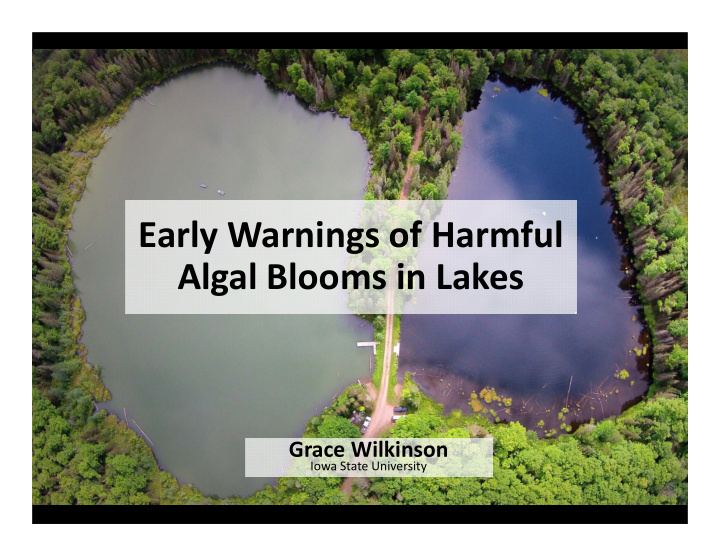



Early Warnings of Harmful Algal Blooms in Lakes Grace Wilkinson Iowa State University
In 2017, three out of four Iowa lakes are considered eutrophic or hypereutrophic Average 77% of algae • Anoxic bottom waters is cyanobacteria • Algal scums in Iowa lakes • Taste and odor issues • Fish kills possible • Cyanobacteria & cyanotoxin risk
What controls cyanotoxin production? What controls cyanotoxin production? Biomass Nutrient Grazing Availability Pressure Microcystin Temperature Light Intensity Combining genetic techniques with microcystin assays and environmental data to address this question in Iowa lakes
Nutrient Loading Low Medium High High Basin of Resilience Attraction State 1: Clear Water State 2: Algae Dominated
Nutrient Loading Small Perturbation Medium High High Resilience State 1: Clear Water State 2: Algae Dominated AC: how much does today look like yesterday?
Nutrient Loading Low High Low State 1: Resilience Clear Water State 2: Algae Dominated
Nutrient Loading Small Perturbation Low High Low State 1: Resilience Clear Water State 2: Algae Dominated
Nutrient Loading Low Medium High Regime State 1: Shift Clear Water State 2: Algae Dominated
High Frequency Monitoring Ecosystem Thresholds Alarms Alarms
• Acted on the early warning alarms and intervened • The lake recovered and did not stay in the bloom state
Are early Algal Bloom warnings of HABs detectable in Iowa Lakes? Data courtesy of Jason Palmer, Iowa DNR
CuSO 4 Addition Photo: Cal Buelo
A To Tool fo for Pr Proactive Ma Manage geme ment nt Beach closures to minimize toxin Herbicide application with minimal exposure risk ecological and service impact Photo: Ben Wallace Aeration and mixing systems to prevent fish kills
wilkinso@iastate.edu @goodgracious23 iowalimnology.weebly.com
Recommend
More recommend